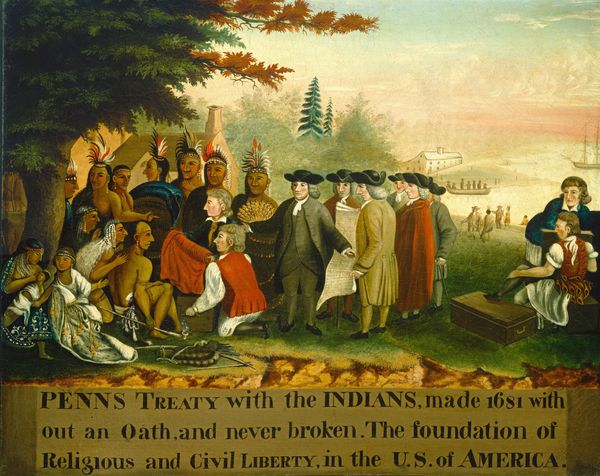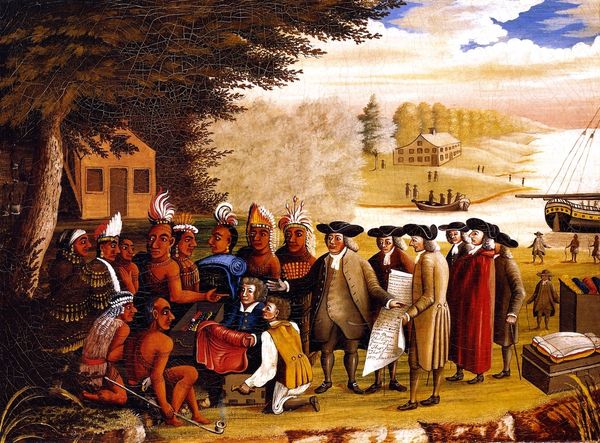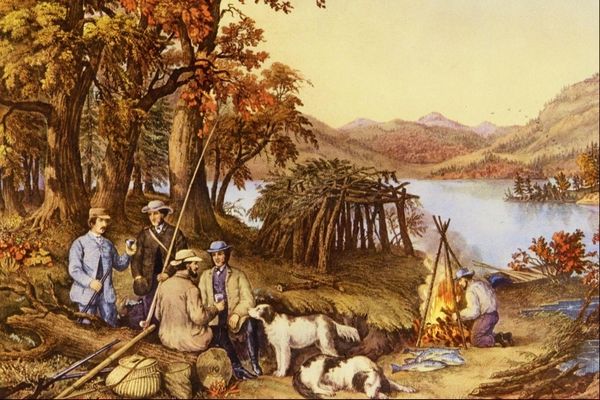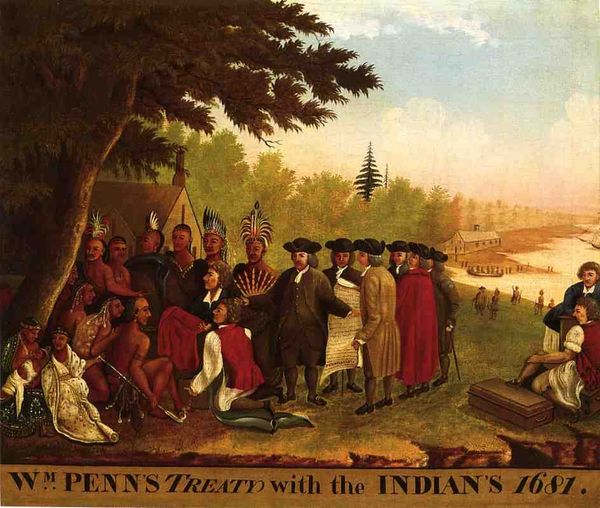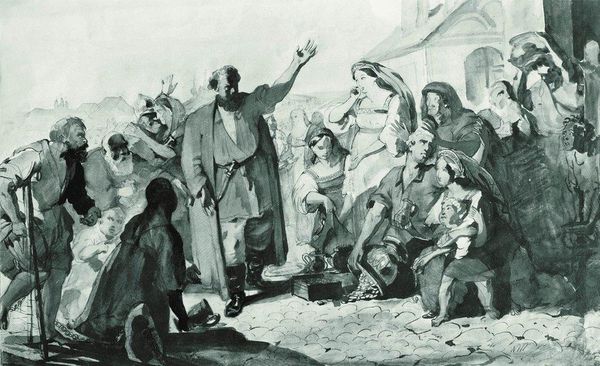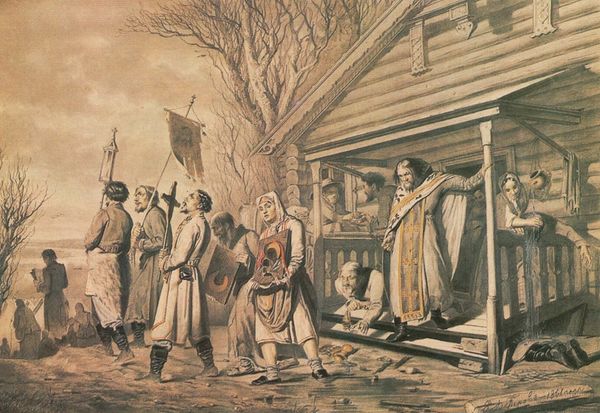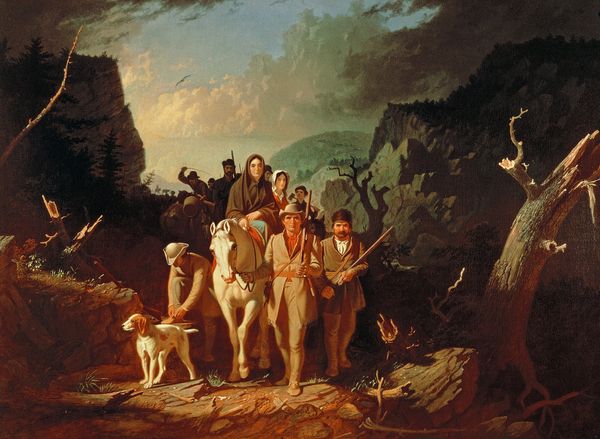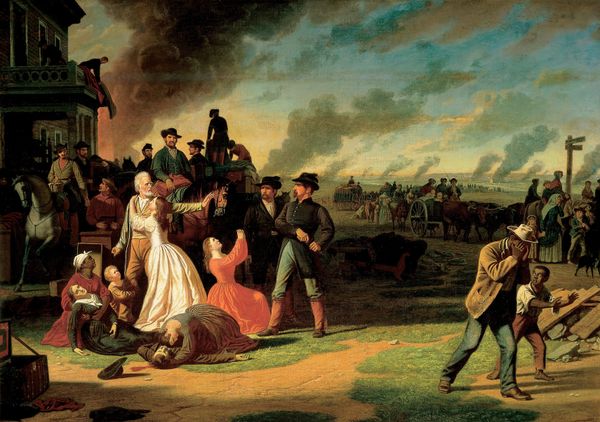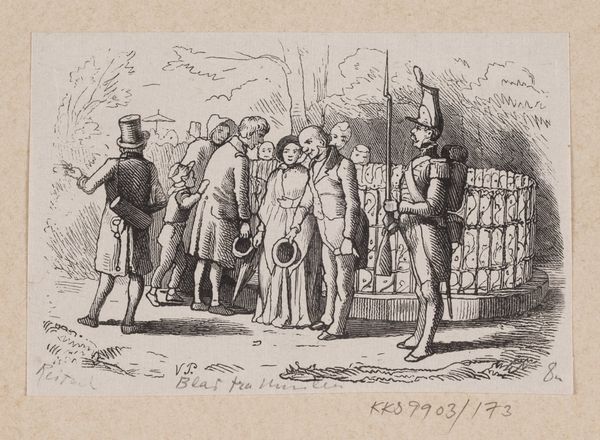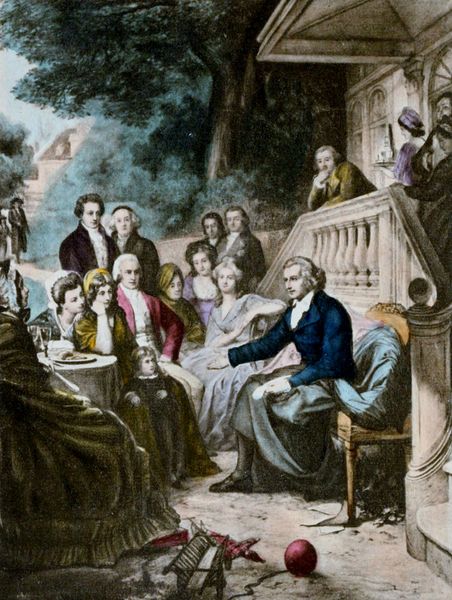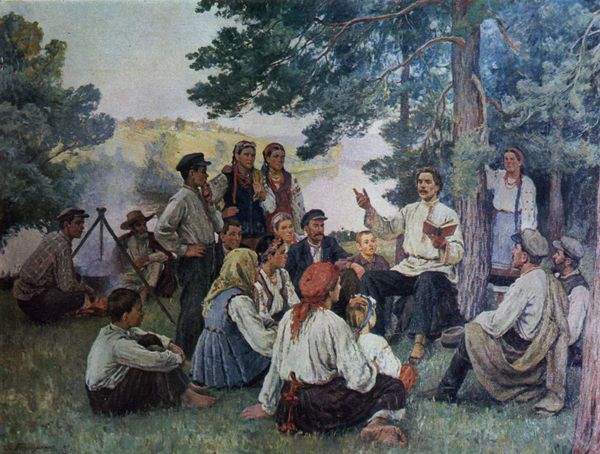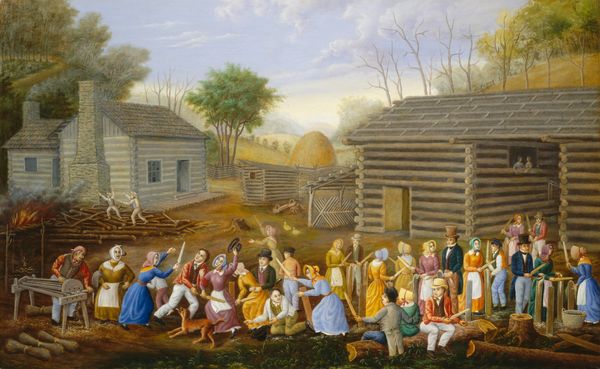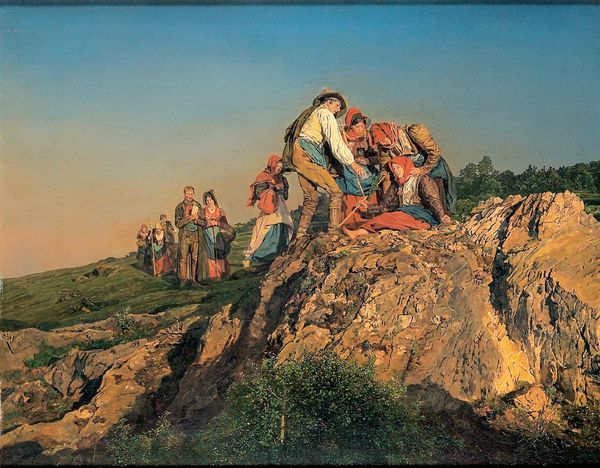
painting, oil-paint
narrative-art
painting
oil-paint
caricature
19th century
history-painting
watercolor
Copyright: Public domain
Editor: Here we have Edward Hicks' "Penn's Treaty with the Indians," painted in 1845. The scene depicts this famous treaty as one of peace and mutual respect. What I immediately notice is the distinct separation in visual presentation between the two groups – the Native Americans, presented as a group, seated beneath a lush tree; and William Penn's entourage, appearing highly structured, composed in darker shades. What are your observations? Curator: Formally speaking, the division you observe establishes a clear binary. Hicks has structured his composition around opposing pictorial languages. On one side, we see an emphasis on the organic, with curvilinear forms dominating – the tree, the rounded figures of the Indigenous people. On the other, a more regimented, linear quality in the depiction of the colonizers and their architecture in the distance, drawing our attention to opposing aesthetic systems. Do you note how Hicks uses colour to further reinforce this separation? Editor: Absolutely. The Indigenous figures display vibrant, earthy colours in contrast to the Quakers. Their muted shades and solid blocky silhouettes contribute to a solemn, perhaps, restrained tone on their side of the picture plane. It's almost as if they are being visually ‘contained’. Curator: Precisely. The chromatic restraint serves as an anchor for compositional meaning, thus reflecting established formal languages for expressing and representing social power. What do we then make of the hand gestures shared between the two groupings at the focal point of the picture, from a semiotic perspective? Editor: The act of shaking hands appears almost staged within the larger dichotomy of light, line and hue in the painting – a gesture towards reconciliation, but perhaps superficial given the overwhelming formal divides you have astutely identified. Curator: Indeed. Close observation suggests that it's more performance than partnership. What's remarkable is how such formal elements contribute to and ultimately unsettle a seemingly straightforward narrative. Editor: This formal reading really sheds new light on how seemingly simple representational devices speak volumes about power dynamics!
Comments
No comments
Be the first to comment and join the conversation on the ultimate creative platform.
